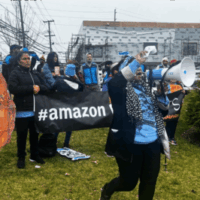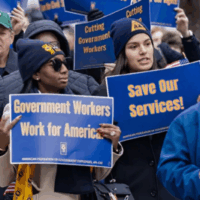FUTURE LAW JOURNAL CASE STUDY: The Supreme Court ruling last week in Glacier Northwest v. International Brotherhood of Teamsters may have created an unusual conflict that could put it on a collision course with the National Labor Relations Board.
That’s because the court, in an 8-1 decision, ruled that the Washington Supreme Court erred in dismissing a concrete company’s lawsuit against the union for damages incurred by a 2017 strike and ordered the court to reconsider the case.
But last year prosecutors at the NLRB, under General Counsel Jennifer Abruzzo, alleged that Glacier Northwest’s lawsuit was one of several unlawful retaliatory actions against union members. That case is pending before an administrative law judge at the agency.
Employment law experts say that it is rare for the NLRB to police a party’s use of the legal system.
“There are lots of lawsuits that are brought in good faith and get dismissed,” attorney Jack Sullivan of Dorsey & Whitney told POLITICO. “That doesn’t mean that the fact that it was brought in the first place means it was for an improper purpose or an inappropriate purpose.”
As recently as mid-May, an agency judge sided with NLRB prosecutors’ arguments that Starbucks violated labor law through its use of subpoenas in one of the myriad cases it is battling over its counter unionization efforts.
What’s unique in this instance is that the Supreme Court’s Glacier decision, in one sense, essentially said the company’s case against the Teamsters can and should be allowed to move forward.
The NLRB’s treatment of litigation by parties locked in labor disputes has bubbled up to the Supreme Court a couple of times over the decades, and this case has the potential to as well depending on how things shake out given the messiness that put it on this term’s docket in the first place.
Justice Samuel Alito said as much, calling it “a good candidate for a quick return trip” in a footnote responding to Justice Ketanji Brown Jackson’s dissent.
And that has some left-leaning legal observers on edge, given the court’s conservative majority.
“We’ve seen a bunch of times where the justices chip away at workers’ rights and leave the door open for future challenges,” said Cathy Ruckelshaus of the National Employment Law Project. “That’s worrisome, and it seems to be a pattern with this current Supreme Court.”
Related to
The Latest News
All newsMayor Bowser & D.C. Council Must Respect the Will of D.C. Voters by Rejecting Repeal of Initiative 82

Blog
New Brief Sheds Light on the Amazon’s Dangerous ‘Flex’ Labor Model

News Release
NELP Denounces Supreme Court Ruling Permitting Immediate Layoffs of Hundreds of Thousands of Federal Workers

News Release
